#manziat
Text
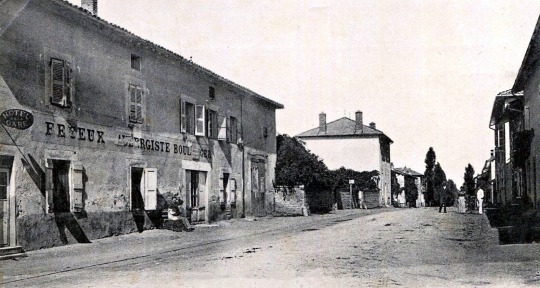
Aubergiste, boulanger, hôtel de la gare, route de Pont de Vaux, Manziat, Ain.
5 notes
·
View notes
Note
Trick or treat 🌈🦄
Treat 🎃
Goddess Manzi' at, Manzât, Ma(n)zat, Manziat, Mazzi'at, Mazzât, Mazzêt (Akkadian, Elamite), Tir-ana (Sumerian)
Goddess primarily of Elam and associated with Susiana. Šimut, a netherworld and herald god, seems to have been her spouse, Lugal-gida was her son, and the goddess Sililitu(m) her vizier.
Her name was probably borrowed from Akkadian and means "Rainbow," as does the Sumerian Tir-ana, literally "Bow of Heaven." She is first attested in a treaty between Narām-Sîn of Akkad and a king of Susa. In the period 2000-1500 BCE she appears mainly in theophoric personal names.
Untaš-Napiriša commissioned a temple for her at Choga Zanbil, and a brick from modern Dhe-e-Nou indicates that Šutruk-Naḫḫunte similarly built a temple for her in that city. A stele of Šilḫak-Inšušinak I refers to a temple of Manzi'at that she shared with Šimut, from which reference it has generally been assumed that she was his wife. In an inscription from Ḫuldelutuš-Inšušinak she is referred to as "great lady," and the same king mentions a joint temple of Manzi'at and Šimut. Manzi'at is likely the same goddess as Mesopotamian Bēlet-āli(m). She had a sanctuary at Nippur and four shrines in Babylon. Manzi'at was also a manifestation of Ištar and part of the constellation Andromeda.
— from A Handbook of Gods and Goddesses of the Ancient Near East by Frayne & Stuckey pp. 200-201
🖤Trick or Treat🧡
#no not all treats will be related to the emoji but i thought this was fun since i recently learned of her#gods#deity#goddess#goddesses#mesopotamia#ancient near east#dictionary#resource#deities#polytheism#paganism#landof2rivers#trick or treat game#oh my god is ḫ and š an effing nightmare because iphone photos doesnt paste that#trick or treat 2023
1 note
·
View note
Text
Pride Month special: Manzat, the deified rainbow and her LGBT connection
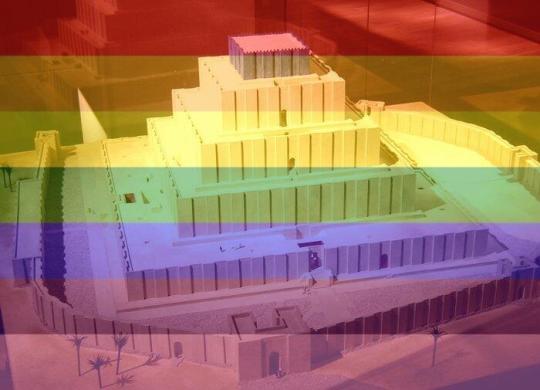
Considering June is the Pride Month, I've decided to dedicate this month's first article to a rainbow-related topic too. Below the cut you can learn everything there is to know about the Mesopotamian goddess of the rainbow, Manzat (also spelled Mazziat, Manziat, Mazzet etc.) - her origin, role ascribed to her by ancient authors, associated deities and more.
As promised by the title, the final section of the article deals with a text mentioning Manzat, which is, as far as I can tell, the oldest documented association between the rainbow and LGBT themes.
Manzat isn't exactly an A list goddess. Even calling her a B list one would be a stretch. Indeed, she's so obscure that we know more about many attendant deities than about her. She nonetheless is attested in many different sources, found in areas between the ancient states of Mari (in present day Syria) and Elam (in present day Iran).
Manzat most likely has her origin among Akkadians in ancient Mesopotamia. Her name is pretty self explanatory – if written without the symbol known as “divine determinative” in front of it, it's simply the Akkadian term for the regular rainbow. While a Sumerian form of the name is known as well – Tir-anna (“Bow of heaven”) – the fact it appears to be a pun based on Akkadian homonyms (the sign used to write “Tir”means “forest” in Sumerian but was pronounced close to the Akkadian word for bow leading to such an usage in some Sumerian texts) makes it unlikely it arose naturally.
Between Elam and Mesopotamia
Curiously, it seems that despite Akkadian origin she was actually most popular in Elam, to the east of the Tigris. The first mention of her known today comes from the treaty of Naram-sin, king of Sumer and Akkad, with an unspecified ruler of a part of Elam, where she appears among the deities serving as its witnesses, alongside the crème de la crème of the Elamite pantheon – Pinikir, Humban (likely a “king of the gods” figure like Mesopotamian Enlil, venerated well into Persian times when parallels can be drawn about the cults of him and “Auramazda” - an early, not necessarily fully Zoroastrian form of Ahura Mazda), Inshushinak (the tutelary god of Susa who judged the dead) and so on.
It needs to be pointed out that Manzat's “career” in Elam isn't a unique situation. While the Elamite language wasn't related to Sumerian or Akkadian – or to any other known language, living or extinct, for that matter – a number of Elamite gods have names borrowed from these two languages. In addition to Manzat, these include Lagamal (Akkadian - “no mercy,” an underworld deity), Ishmekarab (Akkadian - “hears the prayer,” a law deity) and Inshushinak (Sumerian - “Lord of Susa,” associated with both Lagamal and Ishmekarab). All of them appear in Mesopotamian texts too, but didn't have quite the same relevance there as in Elam.
In turn the Elamite god Simut was adopted by the Mesopotamians as a personification of Mars and the goddess Pinikir became somewhat of an international sensation, showing up as far as west as in Anatolia, for example in the Hittite Yazilikaya sanctuary, possibly as a personification of Venus. While early researchers viewed Pinikir as a mother goddess, and this claim still shows up here and there today, renowned experts such as hittitologist Gary Beckman and archaeologist Kamyar Abdi, who studied this goddess in depth, demonstrated she was instead an “Ishtar type” deity. It's also possible the god Tishpak has his roots in Elam, though some scholars instead see him as a reflection of the Hurrian weather god Teshub instead.
The worship of Manzat
Sadly, there are no known myths about Manzat. What little we know about her comes mostly from sources concerned more with cultic than mythical affairs. For example records show that Manzat was reasonably popular as a deity invoked in theophoric names, both Akkadian and Elamite. Examples include Manzat-ili (“Manzat is my god”), Manzat-ummi (“Manzat is my mother”) and “Danum-Manzat” (“Manzat is mighty”).
A number of shrines and temples of Manzat are recorded: in Mesopotamia in Nippur and Babylon (four shrines in that city alone), and in Elam in Susa, Hubshen ( present day Deh-e Now) and as a part of the famous Choga Zanbil site (the first photo in this article is a modern reconstruction).
It seems in Elam she was often worshiped alongside the already mentioned Simut, and some researchers propose they were a couple; evidence from the Mesopotamian city of Der appears to indicate she was viewed as the wife of the local head god Ishtaran (no relation to Ishtar) there. However, the god list An-Anum doesn't list any husband in its brief Manzat section – only an otherwise completely unknown son, Lugalgidda, and a sukkal (vizier, second in comman), Sililitum. Sililitum's name is Akkadian, but appears to be the name of a month in the Elamite calendar as well. Ishtaran has no wife in this god lists, and some sources simply call his spouse “Šarrat-Der(i)” - “queen of Der.”
One curious Elamite inscription refers to Manzat as “Manzat-Ishtar” - this doesn't necessarily indicate a conflation between her and the superstar of Mesopotamian mythology, though. It's possible that in this case “Ishtar” means an ishtar without the capital I: in some text, “ishtar” is a generic term for goddesses, not even necessarily of the “Ishtar type.” Examples of such usage of this term can even be found in Epic of Gilgamesh (tablet XI). No other sources associate Manzat directly with Ishtar – the latter's Elamite equivalent was Pinikir; as I’ll demonstrate later she was associated with another “Ishtar type” goddess though.
It's possible that a goddess hiding behind the Akkadian title “Belet Ali” - “lady of the city” - was one and the same as Manzat. The fact that the enigmatic “Belet Ali” was associated with Simut in Elam strengthens this impression.
A number of epithets are attested in god lists, among them “Lady of the regulations of heaven,” “Companion of heaven” and “She who makes the city flourish.” Almost all of them highlight her nature as a celestial deity.
Astronomical role
Manzat's Sumerian name Tiranna – but seemingly not her Akkadian name – was also used to refer to an unidentified star. According to Gods, Demons and Symbols of Ancient Mesopotamia: An Illustrated Dictionary by J. Black and A. Green (p. 153, the Rainbow entry) horse head under a “gate” symbol present on some kudurru (Mesopotamian border markers) represents this star, but I can't find this claim anywhere else.
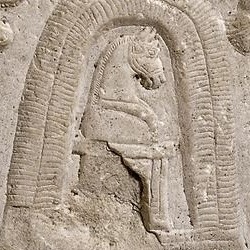
The horse head symbol on a kudurru (British Museum)
Manzat, Nanaya and the promised LGBT themes
While this is technically almost all there is to know about Manzat, the story doesn't end here. As I promised, I will now introduce a text which associated the rainbow – well, Manzat, to be specific, rather than the general idea of rainbows, but the point stands – with broadly understood LGBT themes.
The discussed text is a hymn to the goddess Nanaya. Nanaya was either a hyposthasis of Inanna/Ishtar, part of her entourage, or an independent but similar deity, and was first and foremost a goddess of love, including its corporeal and sensual aspect. In some hymns Inanna/Ishtar “tutored” Nanaya.
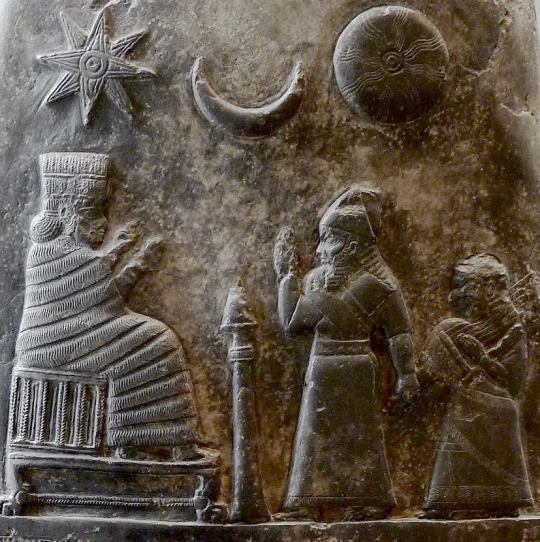
King Meli-Shipak and his daughter praying to Nanaya on a kudurru (wikimedia commons)
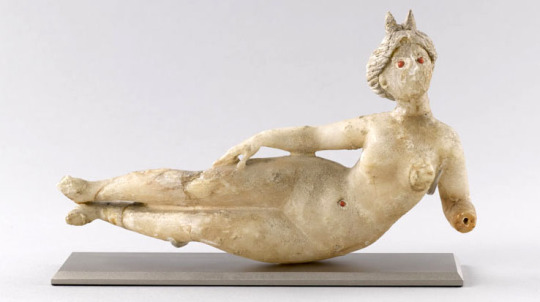
A reclining goddess, identified as a possible late depiction of Nanaya here (Louvre)
The composition in mention a type of exaltation, praising the author's deity of choice by comparing their attributes to these of other gods. In the case of exaltation texts dedicated to Marduk this is often erroneously viewed as “monotheism” in sources of dubious quality, but that's not quite what's happening there. The purpose of such texts was to present the object of personal devotion as particularly grand and significant in the divine hierarchy by comparing their traits to these of other gods (eg. at mot henotheism, not monotheism); they are also not exclusive to Marduk, and they don't deny the existence of a multitude of gods (the famous Marduk exaltation still mentions his wife Sarpanit independently for example)
According to the discussed tex Nanaya, to put it colloquially, swings both ways:

This passage was identified as referring to sexual matters already in the 1970s (A Sumero-Akkadian Hymn of Nanâ by E. Reiner, p. 233-234; the article is somewhat dated but a link can nonetheless be found in the bibliography).
In an earlier strophe Nanaya states that she can take a male form (as a side note Reiner regards the form with “heavy breasts” as unusual for her):

While exaltation of a specific deity could include both gods and goddesses as their “aspects” (exaltation of Marduk included the goddess of victory Irnina among deities compared to him), in this case the mention of a bearded god is connected to a certain degree of fluidity of gender associated with many “Ishtar type” goddesses, especially with the Hurrian Shaushka. For Nanaya it's pretty uncommon, as far as I know appearing only in this single extraordinary text, and even here a result of association with her more famous “mentor” Ishtar – but the point stands.
In the rest of the hymn, goddesses Nanaya identifies herself with are enumerated. These include all the usual suspects (like various forms of Ishtar, important city goddesses, etc.), but also Manzat, here identified as the goddess of Der.
Since the text describes Nanaya as – if you squint - interested in both men and women and perhaps genderfluid, it's pretty safe to say this is the oldest recorded association between the rainbow and lgbt themes, even though it has nothing to do with modern use of this symbol.
If nothing else, it would be funny to bring this up next time someone claims the use of rainbow as a symbol of the LGBT community is “inappropriate” due to its biblical connotations – Manzat and Nanaya, while irrelevant today even by the standards of Mesopotamian deities, are after all figures of even greater antiquity.
Happy Pride Month, everyone.
Bibliography
Manziʾat entry in Reallexikon der Assyriologie und vorderasiatischen Archäologie by W. G. Lambert is the source of most of the information in this article
Goddesses in Context: On Divine Powers, Roles, Relationships and Gender in Mesopotamian Textual and Visual Sources by J. M. Asher-Greve and J. G. Westenholz
Gods, Demons and Symbols of Ancient Mesopotamia: An Illustrated Dictionary by J. Black and A. Green
The Other Gods who are: Studies in Elamite-Iranian Acculturation Based on the Persepolis Fortification Texts by W. F. M. Henkelman
Elamite Temple Building by D. T. Potts
A Sumero-Akkadian Hymn of Nanâ by E. Reiner
Elamite Religion in Encyclopaeda Iranica
For more sources regarding Nanaya, other “Ishtar type” goddesses and their possible genderfluid character see my previous articles here, here and here.
125 notes
·
View notes
Photo

Sauvons notre patrimoine - Château d'Able
http://Sauvonsnotrepatrimoine.com
Tourisme Giron , Tourisme Gorrevod , Tourisme Grand-Corent , Tourisme Grièges , Tourisme Grilly , Tourisme Groissiat , Tourisme Guéreins , Tourisme Hautecourt-Romanèche , Tourisme Plateau d'Hauteville , Tourisme Haut Valromey , Tourisme Illiat , Tourisme Injoux-Génissiat , Tourisme Innimond , Tourisme Izenave , Tourisme Izernore , Tourisme Izieu , Tourisme Jassans-Riottier , Tourisme Jasseron , Tourisme Jayat , Tourisme Journans , Tourisme Joyeux , Tourisme Jujurieux , Tourisme Labalme , Tourisme Lagnieu , Tourisme Laiz , Tourisme Le Poizat-Lalleyriat , Tourisme Lantenay , Tourisme Lapeyrouse , Tourisme Lavours , Tourisme Léaz , Tourisme Lélex , Tourisme Lent , Tourisme Lescheroux , Tourisme Leyment , Tourisme Leyssard , Tourisme Surjoux-Lhopital , Tourisme Lhuis , Tourisme Lompnas , Tourisme Loyettes , Tourisme Lurcy , Tourisme Magnieu , Tourisme Maillat , Tourisme Malafretaz , Tourisme Mantenay-Montlin , Tourisme Manziat , Tourisme Marboz , Tourisme Marchamp , Tourisme Marignieu , Tourisme Marlieux , Tourisme Marsonnas
0 notes
Text
Télécharger Livres PDF Gratuitement Manziat | Portrait Il livre Le Progrès sur son scooter depuis neuf ans #ebook #livrePDF #livret #coursesEnVrac
source https://ofriceandzen.org#07344e4bbb6fc5d15a769a034b74b36e
0 notes
Text
Télécharger Livres PDF Gratuitement Manziat | Portrait Il livre Le Progrès sur son scooter depuis neuf ans #ebook #livrePDF #livret #coursesEnVrac
source https://todsbagndrivingshoese.com#07344e4bbb6fc5d15a769a034b74b36e
0 notes
Text
Télécharger Livres PDF Gratuitement Manziat | Portrait Il livre Le Progrès sur son scooter depuis neuf ans #ebook #livrePDF #livret #coursesEnVrac
source https://infaithofficial.com#07344e4bbb6fc5d15a769a034b74b36e
0 notes
Text
Télécharger Livres PDF Gratuitement Manziat | Portrait Il livre Le Progrès sur son scooter depuis neuf ans #ebook #livrePDF #livret #coursesEnVrac
source http://kesherscouting.org#07344e4bbb6fc5d15a769a034b74b36e
0 notes
Text
Télécharger Livres PDF Gratuitement Manziat | Portrait Il livre Le Progrès sur son scooter depuis neuf ans #ebook #livrePDF #livret #coursesEnVrac
source https://kennelrealscoop.com#07344e4bbb6fc5d15a769a034b74b36e
0 notes
Text
Télécharger Livres PDF Gratuitement Manziat | Portrait Il livre Le Progrès sur son scooter depuis neuf ans #ebook #livrePDF #livret #coursesEnVrac
source https://kodixbmc.org#07344e4bbb6fc5d15a769a034b74b36e
0 notes
Text
Télécharger Livres PDF Gratuitement Manziat | Portrait Il livre Le Progrès sur son scooter depuis neuf ans #ebook #livrePDF #livret #coursesEnVrac
source http://mainstreamop.org#07344e4bbb6fc5d15a769a034b74b36e
0 notes
Text
Sortir : retrouvez les bons plans du week-end - Le Progrès
Le Progrès
Sortir : retrouvez les bons plans du week-end
Le Progrès
Pour régaler vos papilles, les fêtes du vincuit à Courtes, de la quenelle à Nantua et du boudin à Manziat promettent de bonnes dégustations. A Bourg-en-Bresse, la braderie va prendre possession du centre-ville, de quoi flairer les bonnes affaires. A ...
Lire la suite bons plans - Google Actualités
0 notes
Photo
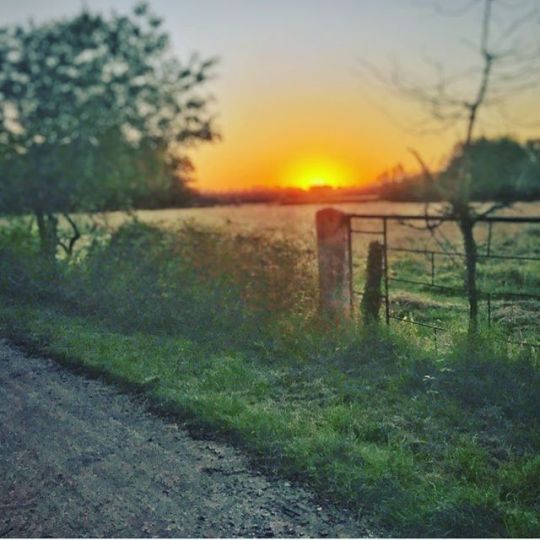
#manziat #sunrise #ain #france #onestenfinale #ilovefrance #igersfrance #instapic https://ift.tt/2up99Hy
0 notes
Photo

Vespa/mochet Prix 5 000 € VilleManziat 01570 #AUTO #AUTOFRANCE24 #avendre http://ow.ly/KHLJ30b9og5 (à Manziat)
0 notes
Photo

Sauvons notre patrimoine - Château d'Able
http://Sauvonsnotrepatrimoine.com
Tourisme à Lavours, Tourisme à Léaz, Tourisme à Lélex, Tourisme à Lent, Tourisme à Lescheroux, Tourisme à Leyment, Tourisme à Leyssard, Tourisme à Surjoux-Lhopital, Tourisme à Lhuis, Tourisme à Lompnas, Tourisme à Loyettes, Tourisme à Lurcy, Tourisme à Magnieu, Tourisme à Maillat, Tourisme à Malafretaz, Tourisme à Mantenay-Montlin, Tourisme à Manziat, Tourisme à Marboz, Tourisme à Marchamp, Tourisme à Marignieu, Tourisme à Marlieux, Tourisme à Marsonnas, Tourisme à Martignat, Tourisme à Massieux, Tourisme à Massignieu-de-Rives, Tourisme à Matafelon-Granges, Tourisme à Meillonnas, Tourisme à Mérignat, Tourisme à Messimy-sur-Saône, Tourisme à Meximieux
0 notes
Text
Sortir : retrouvez les bons plans du week-end - Le Progrès
Le Progrès
Sortir : retrouvez les bons plans du week-end
Le Progrès
Pour régaler vos papilles, les fêtes du vincuit à Courtes, de la quenelle à Nantua et du boudin à Manziat promettent de bonnes dégustations. A Bourg-en-Bresse, la braderie va prendre possession du centre-ville, de quoi flairer les bonnes affaires. A ...
Lire la suite bons plans - Google Actualités
0 notes